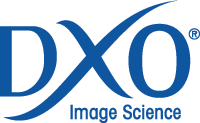DxO Optics Pro: big discount, D800 support, and a 64-bit debut
posted Wednesday, May 23, 2012 at 7:14 PM EDT
 If you've bought a new computer recently, chances are pretty good that you've made the leap to the world of 64-bit computing.
If you've bought a new computer recently, chances are pretty good that you've made the leap to the world of 64-bit computing.
After years of lacklustre sales, 64-bit systems have finally taken off in the consumer world, and in the last couple of years have surpassed sales of 32-bit systems by a wide margin. 64-bit operating systems are now commonplace on both Macintosh and Windows platforms, and third-party software is switching to 64-bit in a big way.
Today, DxO Labs takes the plunge, bringing its flagship Optics Pro image processing application into the modern age with a native 64-bit release. If you're still running a 32-bit machine, though, fear not. At this point in time, it's still optional: the DxO Optics Pro installer will automatically determine whether use of a 64-bit app is possible on your machine, and then install the correct version as appropriate.
The move to a 64-bit release is important in a couple of ways: it allows more memory to be addressed, and offers greater performance, primarily because with more memory there's less reliance on swapping data in and out of memory to free up space. DxO Optics Pro v7.5 will show improved processing speed on 64-bit systems, and also allows processing of much larger images. The upper cap is now set at 36 megapixels for raw files, and a whopping 200 megapixels for RGB JPEG and TIFF files. Previously, it wasn't possible to work on files larger than 24 megapixels. DxO says that startup time has also been improved.
The update also brings changes in a few other areas. Perhaps most significantly is support for the Nikon D800 digital SLR, but interestingly, only in Optics Pro 64-bit Elite edition. That means D800 shooters with older systems will need to upgrade, but given the resolution of its sensor, it's hardly surprising: each D800 raw file is at the upper limit of what is currently accepted by Optics Pro 7.5 even on 64-bit systems. Modules compatible with a a selection of 68 lenses are available for the D800 body. Note that support for the Nikon D800E has not yet been added, as DxO hasn't yet sourced a body for this less widely-available variant.
Other changes include a refined Move / Zoom palette (which now sizes the preview window to fit the width of the left-column in which it resides), and an increase in the number of images displayed for each project in the projects panel. The Image Filter function has also been tweaked so that the menu will stay open after selecting or deselecting each item. There are also new keyboard shortcuts, and on Windows 7 the program will show processing status in the taskbar button.
Along with these changes, DxO Optics Pro v7.5 also has a new activation system, said to use less memory and allow faster startup. From the point of view of the end user, the only other significance of this is that they will need to reactivate on upgrading. DxO notes that this reactivation will not be counted towards the maximum activation count for an Optics Pro key.
Continuing the company's rapid schedule of new lens modules, there are also a further 113 new modules for Canon, Fujifilm, Nikon, Panasonic, Pentax, and Samsung camera bodies, in addition to the 68 added for the Nikon D800.
DxO Optics Pro is ordinarily priced at around US$170 for the Standard edition and $300 for the Elite edition, respectively. If you've been considering purchasing, now's the time: through June 30, 2012 the company is offering a 33% discount on new purchases, bringing this cost down below US$100 for the Standard Edition, and US$200 for the Elite edition.
Today's update is free of charge for anybody who purchased Optics Pro 6 or 7 after September 1, 2011. More details on the DxO website!